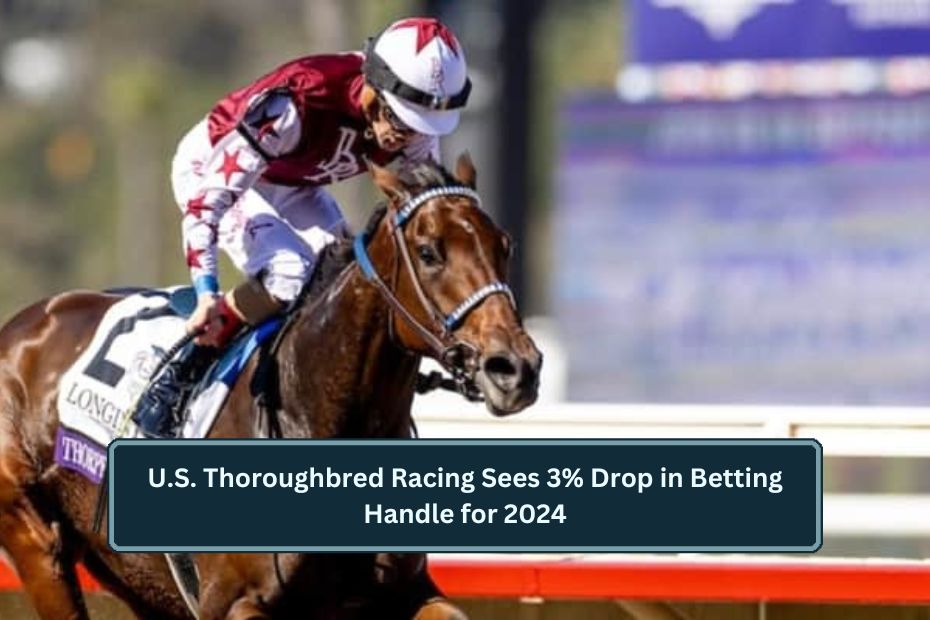The 2024 racing season saw a decline in the betting handle for U.S. Thoroughbred races. For the fourth time in the past five years, the total amount wagered dropped by 3%. While this still resulted in over $11 billion in wagers, the decline reflects a slowdown in racing activity and overall interest.
What is Betting Handle?
Betting handle refers to the total amount of money that is wagered on horse races. It’s a key measure of the sport’s popularity and financial health. When the handle goes up, it usually indicates that more people are betting on races, while a decline can suggest a decrease in interest or engagement.
Key Figures in 2024
In 2024, U.S. Thoroughbred races generated $11.27 billion in wagers. While this is still a substantial amount, it represents a 3% decrease compared to the $11.66 billion handled in 2023. This drop in wagering came despite having 3,787 race days, 30,852 races, and 229,748 horse starts, showing a slight decrease in the overall activity within the sport.
Despite the drop in betting, purses, or the amount of money paid out to winners, saw a small increase. Available U.S. purses rose by 0.5% to over $1.2 billion in 2024. This small increase in prize money was a positive sign in an otherwise down year for betting.
Factors Behind the Drop in Betting
The betting decline was more noticeable in the second half of 2024. After July 1, wagers fell by almost 5% compared to the first half of the year, which only experienced a 2% decrease. The fourth quarter of 2024 was especially hard-hit, with a 5% drop in betting, and December saw a sharp 14% decline.
This slowdown can be attributed to various factors, including changes in consumer behavior, economic pressures, and the impact of inflation, which was reported at 2.7% for the year. The decrease in racing days and races, along with fewer horse starts, also contributed to the overall drop in betting.
Purses See Slight Growth
In a positive development, available purses increased slightly. In 2024, more than $1.3 billion in purses were available, with the amount paid to winners rising by 0.2%. While the drop in wagering affected the betting handle, the increase in purses helped maintain some stability in the industry. This increase in prize money has been a recurring trend, as it was the third time in four years that purses rose.
The Impact of Declining Betting
The drop in betting is a concern for the horse racing industry. It suggests that interest in the sport is waning, which could lead to challenges for racetracks and those who rely on the income from wagering. However, the increase in purses may help keep interest in the sport alive by offering higher rewards for top-performing horses.
Overall, the 2024 betting handle decline is a sign of both challenges and potential opportunities for the U.S. Thoroughbred racing industry. The combination of fewer races and lower betting interest requires attention, but the sport’s ability to maintain and even grow purses shows that there is still potential for improvement.
Looking Ahead to 2025
As the year progresses, it will be crucial to see how the industry responds to these trends. With fewer races and a decrease in wagers, the sport may need to adapt by introducing new ways to engage fans, perhaps by offering more interactive betting options or improving the experience for spectators. Racing officials will need to monitor these developments to ensure the sport’s future success.
In conclusion, while the betting handle for U.S. Thoroughbred races fell by 3% in 2024, the sport continues to generate billions in wagers. The slight rise in purses offers a glimmer of hope for the future, but the drop in betting needs to be addressed. How the industry adapts in the coming years will determine whether this decline can be reversed.
Visit Home


